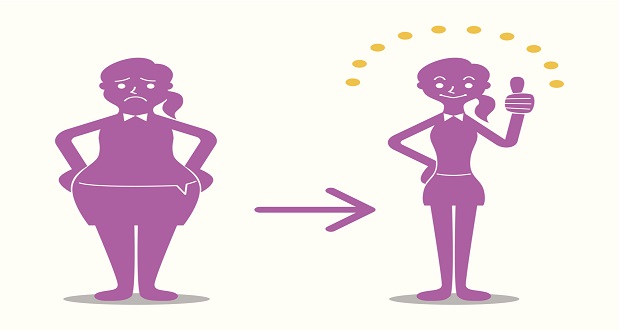
Adapted from Black Fatigue: How Racism Erodes the Mind, Body and Spirit (Berrett Koehler Publishers 2020)
Black Women’s Equal Pay Day is today, August 13, because this is the day that a Black woman must work into the new year to make what a white non-Hispanic man made at the end of the previous year.
Black women, on average, earn sixty-two cents to every dollar that a white man earns. White women make eighty-two cents to every dollar a white man earns[i].
The median annual income for Black women is $34,008 compared to $42,484 for white women and $61,576 for white men[ii]. The net worth of a single Black woman without a bachelor’s degree is $500 and with a bachelor’s degree $5,000.
In February 2019, The Economic Policy Institute posted a Blog that started with this statement: The Black woman’s experience in America provides arguably the most overwhelming evidence of the persistent and ongoing drag from gender and race discrimination on the economic fate of workers and families[iii]. The post asserts that since slavery, Black women have fared the worst in the labor market due to discriminatory practices as well as demeaning perceptions of Black women and their role. Starting with slavery, Black women were perceived as “workers” and not women who might choose to stay at home with children as white women did.
Since slavery, Black women have fared the worst in the labor market due to discriminatory practices as well as demeaning perceptions. Share on XIn 1880, 35.4 percent of married Black women and 73.3 percent of single Black women were in the labor force compared with only 7.3 percent of married white women and 23.8 percent of single white women. These differences extended into the 70’s, when even after marriage white women would typically exit the labor force. Black women were forced to stay in the labor market, not just because it was an expectation but also because Black men could not find adequate employment (forced to take lower paying, less stable jobs) due to discrimination and therefore Black women, often in domestic roles, became co-breadwinners in married households. Today over 80 percent of Black mothers are the primary breadwinners for their families, compared to 50 percent of white women[iv].
Black women have historically been and continue to be overrepresented in low wage jobs with fewer legal protections. As an example, the Social Security Act of 1935 primarily excluded Black women until the 1960s. Caseworkers denied low income Black women cash assistance under the act because they expected Black women to be employed mothers and not stay-at-home moms like white women. The New Deal minimum wage, overtime pay, and collective bargaining legislation excluded the main sectors where Black women worked—domestic service and farming. Corrections have been made since then, but there are still gaps that disadvantage Black women. Black women continue to be overrepresented in low paying jobs that do not provide benefits such as sick pay, health insurance, maternity leave and retirement plans. For example, 36 percent of Black women workers have jobs that do not provide paid sick leave,[v] compounding health issues.
Higher levels of education do not change the wage gaps. Among doctorate degree holders, for instance, Black women earn 60 percent of what white men earn, and white women earn 7 percent more than Black women[vi].
Many Black women, including myself, lament that we are expected to provide our expertise without market rate compensation. Our intellectual capital is often undervalued or not valued at all. Share on XMany Black women, including myself, lament that we are expected to provide our expertise without market rate compensation. Our intellectual capital is often undervalued or not valued at all. It is not unusual for a talented Black woman to be asked to serve as a keynote speaker or on a panel without any compensation. I know what some of my white male counterparts with similar experience and reputation as mine are paid, and it is usually double that of which I am expected to charge.
I know what some of my white male counterparts with similar experience and reputation as mine are paid, and it is usually double that of which I am expected to charge. Share on XSociety holds deep-seated biases about the worth of Black women that date back to slavery. We need to own up to these harsh realities and correct these gross pay inequities.
In my new book Black Fatigue: How Racism Erodes the Mind, Body and Spirit, I elaborate on the pay inequities and other atrocities that Black women continue to endure.
Society holds deep-seated biases about the worth of Black women that date back to slavery. We need to own up to these harsh realities and correct these gross pay inequities. Share on X
[i] “Black Women and the Wage Gap,” March 2020, https://www.nationalpartnership.org/our-work/resources/economic-justice/fair-pay/african-american-women-wage-gap.pdf, accessed April 27, 2020.
[ii] A. Hegewisch and H. Hartmann, “The Gender Wage Gap: 2018 Earnings Differences by Race and Ethnicity,” March 7, 2019, https://iwpr.org/publications/gender-wage-gap-2018/, accessed April 27, 2020.
[iii] N. Banks, “Black women’s labor market history reveals deep-seated race and gender discrimination,” February 19, 2019, https://www.epi.org/blog/black-womens-labor-market-history-reveals-deep-seated-race-and-gender-discrimination/, accessed April 27, 2020.
[iv] G. B. White, “Black Women: Supporting Their Families—With Few Resources,” June 12, 2017, https://www.theatlantic.com/business/archive/2017/06/black-women-economy/530022/, accessed April 27, 2020.
[v] N. Banks, “Black women’s labor market history reveals deep-seated race and gender discrimination,” February 19, 2019, https://www.epi.org/blog/black-womens-labor-market-history-reveals-deep-seated-race-and-gender-discrimination/, accessed April 27, 2020.
[vi] S. O’Brien, “Here’s how the wage gap affects black women,” August 22, 2019, https://www.cnbc.com/2019/08/22/heres-how-the-gender-wage-gap-affects-this-minority-group.html, accessed April 28, 2020.


















